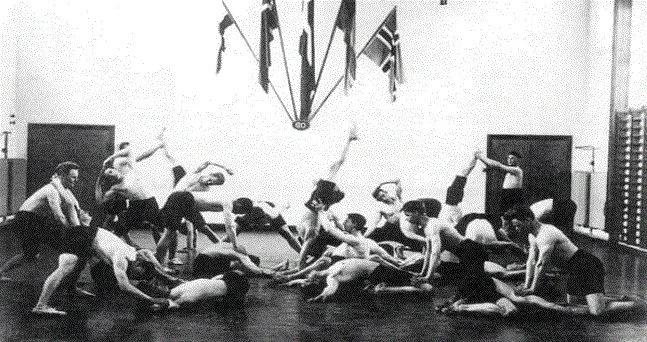The roots of modern yoga are not just Indian, they are also Scandinavian. What we now call yoga goes back a little over 100 years, and is a mix of Indian yoga and Scandinavian gymnastics / physical training techniques that were employed as British military exercise drills.
The original Scandinavian source for modern yoga exercises come from Per Henrik Ling (1776-1839), founder of the Swedish gymnastic system. Following on from Ling's work, Niels Bukh (1880–1950) from Denmark, developed a system called Primitive Gymnastics, which “emphasized continuity of movement, rhythmic exercise, and intensive stretching to seek elasticity, flexibility, and freedom”.
Bukh’s system became part of the official British army training program in 1906, and via the British Army, found it's way to India, where it came to occupy a central position in the Indian physical education scene in the early 1900s.


